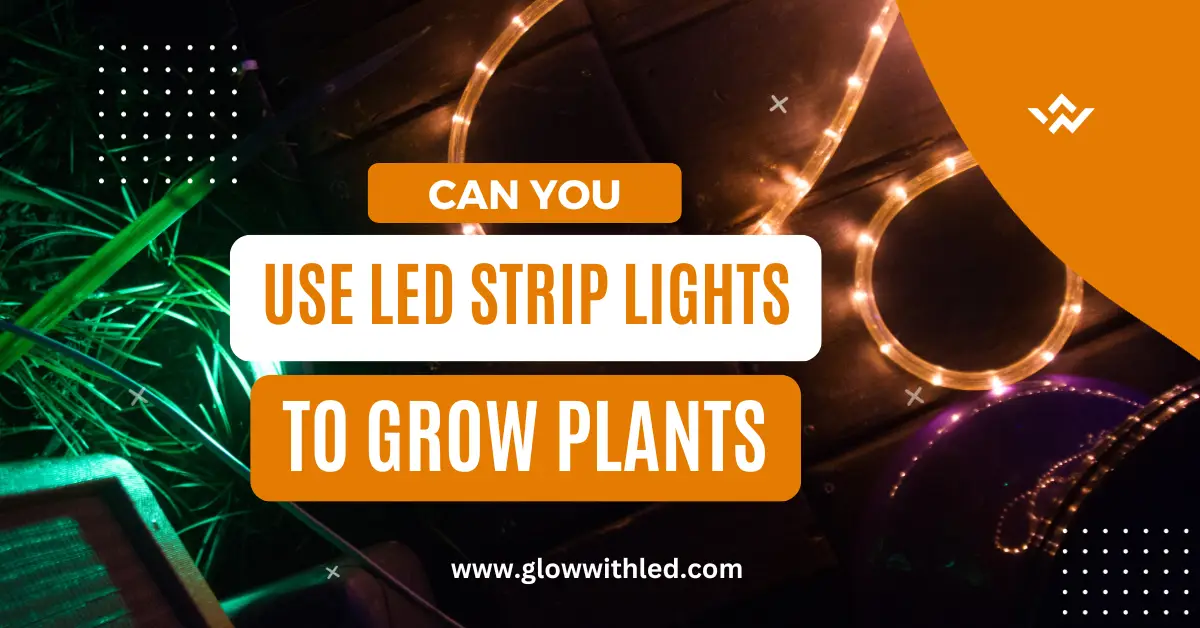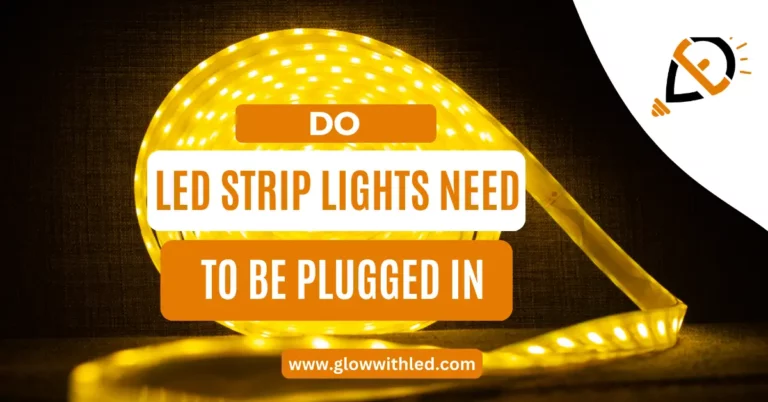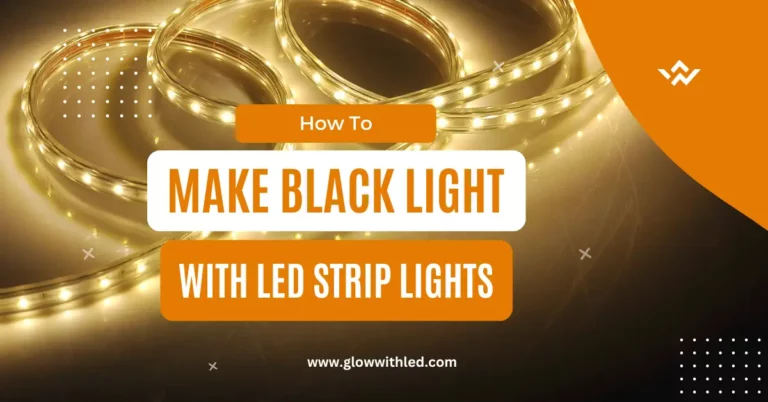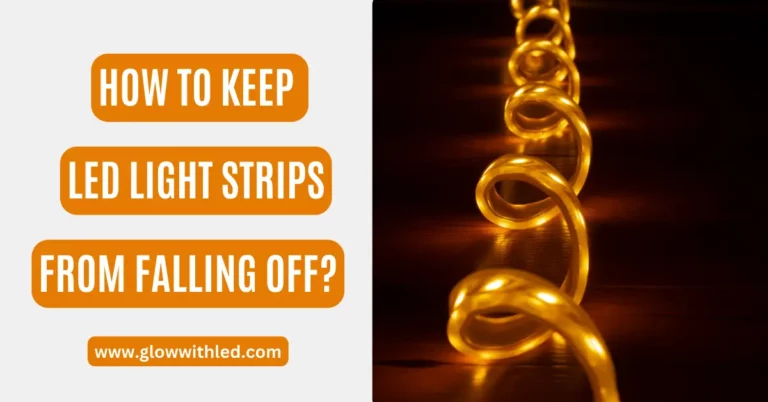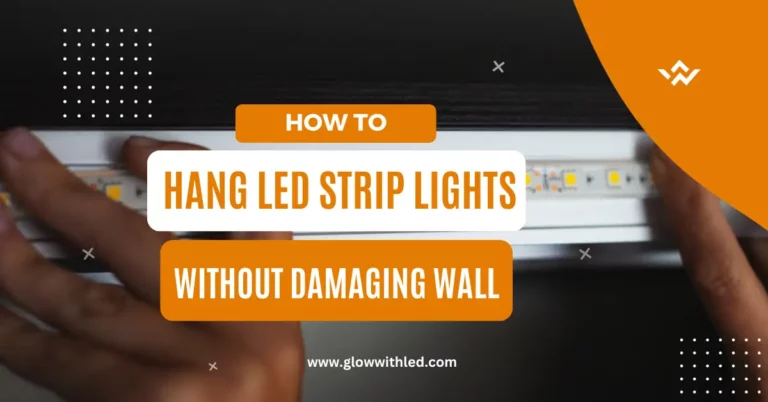Can You Use LED Strip Lights to Grow Plants? [Solved]
Are you a plant lover and have no sufficient space to grow plants?
You have heard it before, you can grow plants only in open spaces where maximum sunlight reaches the plants. Also, plants don’t survive in dark conditions.
Although, some artificial lighting technologies are available to grow plants indoors. Such lights recreate the sunlight and help plants in growth and reproduction.
LED Grow lights are available as an artificial source of lighting to grow plants indoors. However, Can You Use LED Strip Lights to Grow Plants?
Yes, you can use LED strips to grow most plants indoors. LED strips are cost-effective, and everyone can afford them.. Most of us commonly use LED strip lights for different purposes. Here is the complete guide to growing plants with LED strip lights.
What Conditions Do You Need to Grow Plants at Home?
The growth of plants depends on the environment and the type of soil. The environmental conditions that affect the plant’s life cycle include the intensity of light, temperature, and humidity.
Plants require sunlight for photosynthesis which provides them food and energy. So, without sunlight how can you grow plants?
If you want to grow plants indoors, you need to provide a suitable amount of light. Different plants require different wavelengths of light. Some plants can easily grow in dim or lower brightness, some require bright light for healthy growth. It depends on the type of plant you want to grow.
The temperature range is different for different types of plants. Most of the flowering plants grow in the temperature range between 70-80°F at day and 60-68°F at night.
Excessive temperature affects the growth of plants due to burning and dehydration. If you want to grow plants indoors, you need to maintain the temperature required for the healthy growth of plants.
Humidity is also an important factor for the survival of plants. It affects the rate of transpiration in plants and the temperature of the environment. To increase the humidity around the plants, place the pots on the wet pebbles or place the tray filled with water near the plants. This results in evaporation and increases the humidity around the plants.
All these factors are essential for indoor gardening.
How Do LED Strip Lights Differ from Grow Lights?
LED strip lights and LED Grow lights are two different applications of technology. LED strip lights are used for lighting and decoration. Whereas, LED grow lights are used for indoor gardening. Grow lights are designed for the replacement of Sunlight that ensures the photosynthesis and normal healthy growth of plants.
Regular LED strips have low brightness and produce less amount of heat. On the other hand, Grow lights have a higher brightness that’s enough for plant growth.
Moreover, LED strip lights are available in a variety of colors but their brightness is not strong enough for plant growth. Grow lights produce only red and blue spectrum that’s essential for photosynthesis. The advanced Grow light also emits UV and IR light spectrums that provide sufficient energy for the healthy growth of plants.
Can I Use Regular Strip Lights to Grow Plants?
The regular LED strips that we use for decoration are less power-consuming and produce a minimum amount of heat. Moreover, regular LED lights may not provide the specific light energy and spectrum that doesn’t match the requirements of the plant.
The component that helps plants to survive is light. Plants require energy to stay healthy and for growth. For indoor planting, you need to know if LED strips provide sufficient heat for plants or not.
Although LED strip lights are available in a variety of colors. However, their light is not bright enough and may lack the full spectrum of Red and Blue colors that are essential for plants.
Alone LED strips can’t emit bright light. You have to use an extra bulb with LED strips or use the LED strips brighter than standard LED strips that can also emit the Blue and Red Spectrum of light.
Also Read
Do LED Strip Lights Emit Enough Light For Photosynthesis?
The brightness required for photosynthesis is 2000 lumens/square foot. The standard LED strips are not bright enough so they cannot grow most of the plants indoors.
The regular LED strips can emit light of 450 lumens/square foot only. So we need to increase the brightness 5 times.
But how can you increase the brightness of the LED strip light?
The answer is simple, buy the LED strip lights that emit bright light. 5050 LED strip lights can emit the required amount of brightness.
And the next thing you should keep in mind is that plants require the spectrum of RED and BLUE light that help them in photosynthesis. So, you should buy the strips with suitable wavelengths of red and blue spectrum that meet the requirements of plants.
Grow the non-flowering plants indoors. These plants require less brightness than flowering plants and LED strips can easily meet their needs.
Pros And Cons Of LED Strips For Indoor Planting
Here are some benefits of using LED strips for indoor gardening.
- They are easy to install and use.
- LED strips are efficient and consume less power. It reduces the cost of electricity.
- It has a longer life span.
- It emits less heat than other traditional bulbs and prevents plants from dehydrating and becoming dry.
- They are versatile. You can easily create a spectrum of different colors.
Here are some Cons of LED strips in indoor gardening.
- LED strips are not suitable for all types of plants.
- Less powerful than grow lights.
If your LED strips are not working properly for your indoor gardening, then it means your plants require more energy.
So, if you are using LED strips, grow plants that can survive under LED strip lights. Otherwise, you should install grow lights.
Frequently Asked Questions
Can I use regular LED strips to grow plants?
Ans. Yes, you can use regular LED strips to grow plants that require less brightness for normal healthy growth.
Which color of LED strips is best for plant growth?
Ans. Blue and Red color spectrums are essential for plant growth. These colors enhance photosynthesis in plants.
How Close Should LED Strip Lights Be to Plants?
Ans. The distance between the LED strips and the plant should be about 12-13 inches. You can reduce or increase the distance according to the brightness of light.
Do LED strip lights affect plants?
Ans. No, LED strip lights have no side effects on plants. LED helps plants in growth and reproduction.

